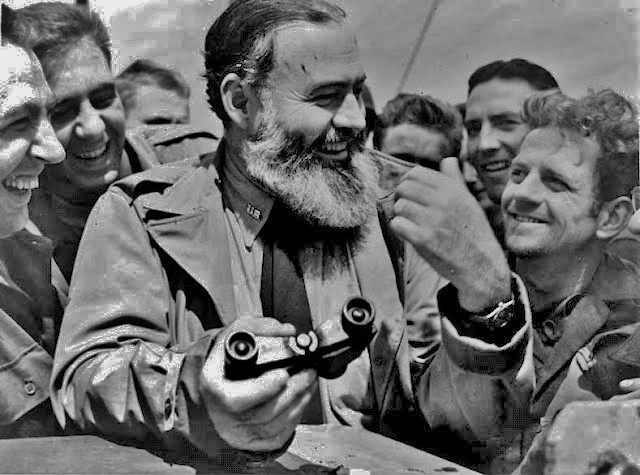Magnification: 8x
Aperture (objective diameter): 24 mm
Field of view: 6.3°
Outlet pupil diameter: 3 mm
The closest focusing distance: 3.2 m
Width: 14.1 cm
Height: 8.5 cm
Weight: 290 g
Production date: 1938.
Binoculars Carl Zeiss Jena Turita 8x24
In 1920, the German optical firm J.D. Möller Optische Werke GmbH, founded in 1864, patents a new optical prism. It is a gluing of two parts (see picture). Due to only two air-to-glass transitions, binoculars with such prisms had better contrast and higher light transmission (and therefore a brighter image) than binoculars with Porro prisms (four air-to-glass transitions).
J.D. Möller Optische Werke GmbH began to produce binoculars with new prisms, and based its advertising on the above fact: why buy more bulky and heavy binoculars on Porro prisms, if you can buy our compact and lightweight binoculars with the same high-quality image?
The management of Carl Zeiss Jena did not like this much: the vast majority of Carl Zeiss binoculars had Porro prisms. A lawsuit began between the two firms, which ended in victory ... J.D. Möller Optische Werke GmbH. This is one of the few cases where Carl Zeiss has lost a lawsuit.
Carl Zeiss engineers did not remain in debt, and in 1923, the "flat" compact Telita 6x18 binoculars appeared, structurally very similar to Möller's binoculars. But Carl Zeiss respected patent law and used the old scheme of prisms from the French company Huet as a turning system.
Telita 6x18 of the first generation (Telita I) had a central focus and flawless mechanical part. However, the optics turned out to be unsuccessful: unlike the competitor, the exit pupil was not round, but “cropped”. In this form, with minor changes (hull finishing materials), this device was produced until 1926. A total of 3,500 copies of this rather rare binocular were produced.
In 1926, the second generation of binoculars - Telita II - was released. It had the same optical characteristics, but it used different, slightly modified Möller prisms (Nichterlein prisms). The optical characteristics have improved significantly (it was possible to eliminate the “cropping” of the exit pupil), and the device was produced in this form until 1943.
Given the success of the Telita II binoculars and to give customers the opportunity to purchase a similar but more powerful "twin", in 1928 Cars Zeiss introduced the new Turita 8x24 model to the market. The new device had an 8x magnification and an objective diameter of 24 mm. It first officially appeared in the Carl Zeiss Jena T326 catalog in 1928, but its sales began a year earlier - in 1927. The model was intended for tourists and for watching sports.
Turita 8x24 was produced until the beginning of the 40s of the last century in two modifications, which differed only in weight - the first version weighed 425 g, the second (30s) - 290 g.
Like the "little brother" Telita II 6x18, Turita 8x24 had a brighter image (only 8 air-to-glass transitions) compared to 8x24 binoculars with similar characteristics, but built on Porro prisms (11-12 air-to-glass transitions "). However, its plasticity was worse due to the proximity of the objective lenses to each other.
The binoculars presented today in our virtual museum belong to the second (lightweight) modification of this model. It has a central hinge, on the upper washer of which a scale of interpupillary distances is applied, magnification and aperture (lens diameter) of 8x24 binoculars.
The body design of the device is very similar to the design of the "younger brother" - Telita II 6x18 https://binocollection.com/catalog/binoculars-carl-zeiss-jena-telita-ii-6x18.html (see photo). In the working position, the binoculars strongly “fold”. The eyepiece housings have a longitudinal knurling, the diameter of the base of the eyepieces is 22 mm. Prism body height 42 mm, width 69 mm, thickness 32 mm. Focusing of the device is central, the focusing wheel has a rare location - in front (near the lenses) of the binoculars. Focusing with this design is most convenient to do ... little fingers)). Lens diameter - 24 mm.

Hemingway on board the attack transport Dorothea L. Dix on the way to observe the assault on Omaha Beach on 6 June 1944.
The inscriptions on the left shoulder of the central focus are "Carl Zeiss". On the right - "Turita 1877458". The inscription is printed in block letters against the background of a schematic image of a Carl Zeiss Tessar photographic lens.
The case for the binoculars is well preserved and has a branded embossment near the lock (see photo).
The serial number of the binoculars is 1877458, it was made in 1938 in a batch of 500 pieces. The first version of this binoculars is here.
